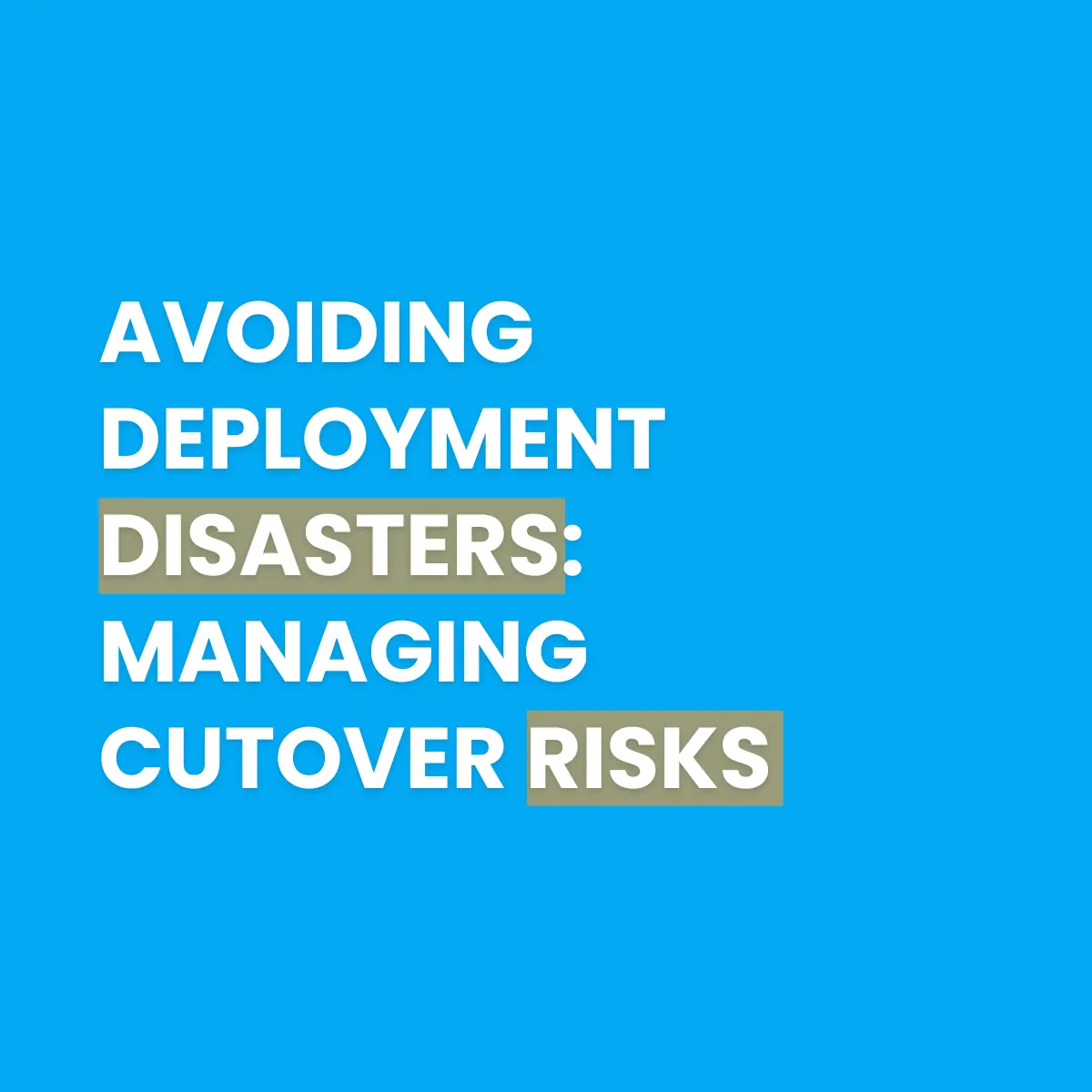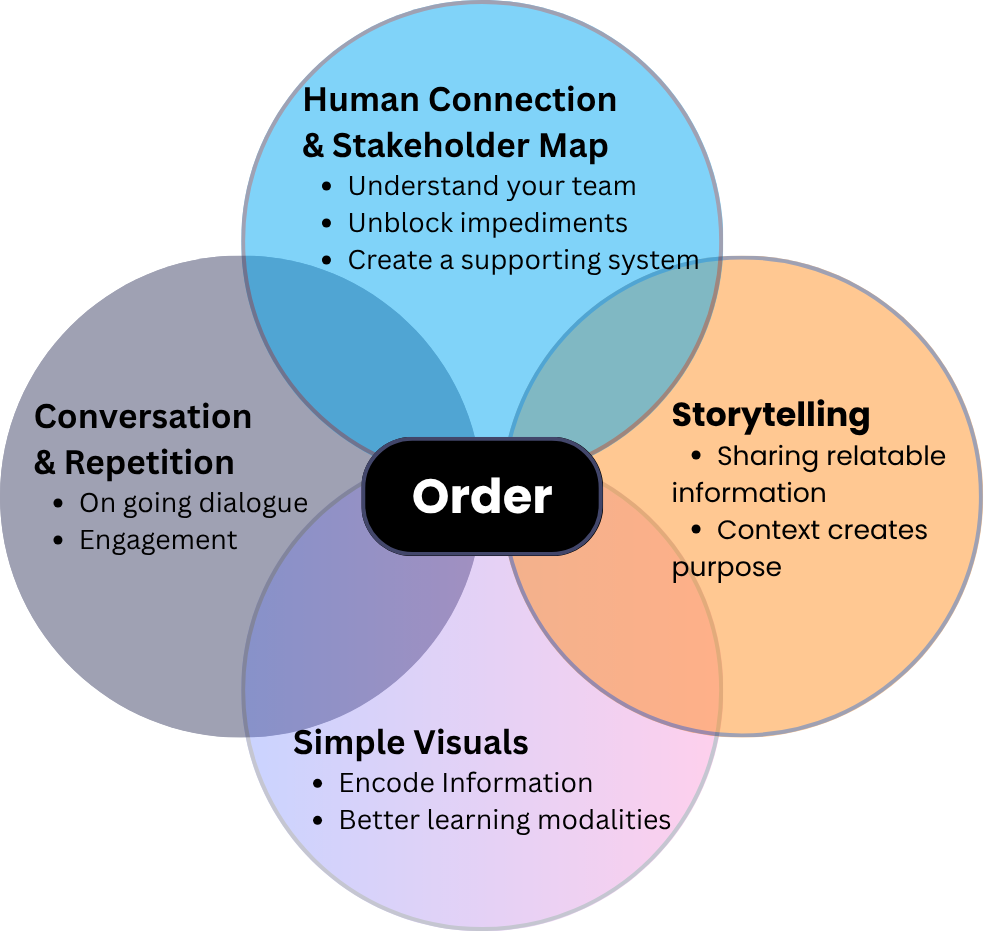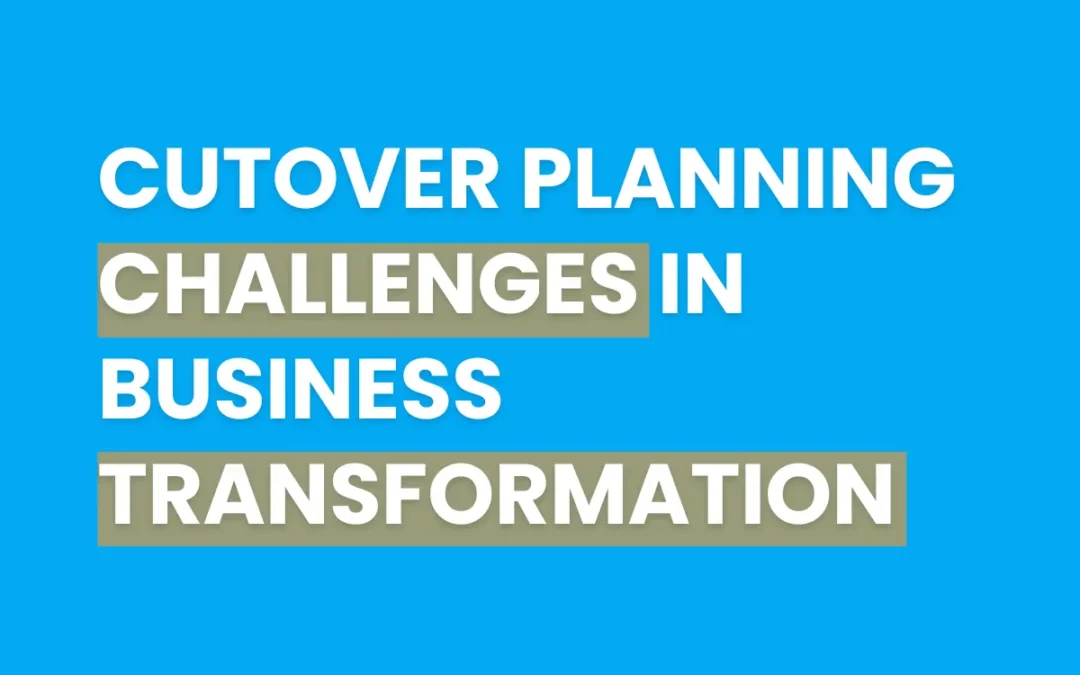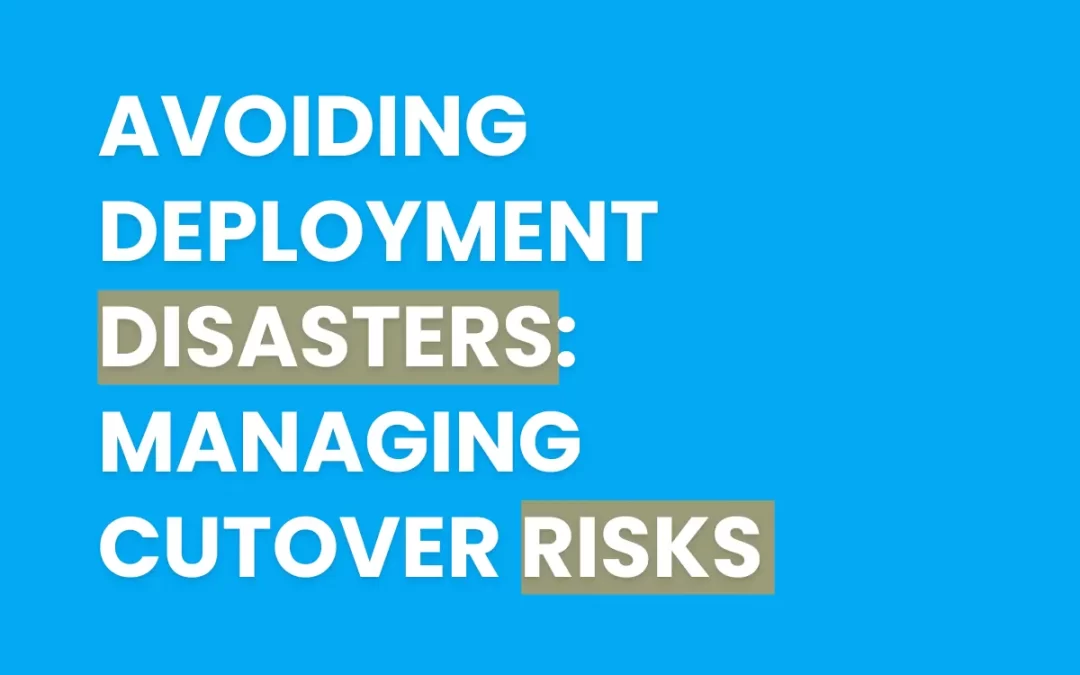Avoiding Deployment Disasters: Managing Cutover Risks in IT Rollouts

Introduction
In today’s fast-paced digital environment, rolling out new IT systems is essential for keeping up with innovation. However, deployment is also one of the most vulnerable phases of any project. The moment of cutover—the transition from old to new systems—can make or break months of planning. Failures at this stage can cause operational disruption, data loss, reputational damage, and significant costs.
In this article, we explore the biggest risks during cutovers, the challenges organisations face in IT rollouts, and practical strategies to mitigate deployment failures.
Part 1: What Are Cutover Risks?
A cutover refers to the point in a project where an organisation switches from an existing system or process to a new one. It often happens over a short, predefined time window, and requires absolute precision. Risks associated with this stage include:
- Data migration issues – Incomplete or corrupted data transfers can render systems unusable (check the Data Migration Checklist).
- Downtime – If systems aren’t available during business-critical periods, productivity and customer service suffer.
- Lack of rollback options – Without a solid backout plan, failures can escalate.
- Human error – Manual steps carried out under time pressure are prone to mistakes.
- Integration failures – New systems might not work as expected with legacy infrastructure.
- Environment discrepancies – Despite best efforts, the Test, QA, Preprod, and Production environments are rarely identical. This leads to unexpected issues surfacing only after go-live, making the Production cutover uniquely risky.
These risks are amplified when there’s poor planning, limited testing, or weak communication across teams (? Team Coordination Tips).
Part 2: The Challenges of IT Rollouts
Rolling out IT projects—especially on a large scale—comes with its own set of challenges:
- Complexity of modern systems – Integrating multiple platforms, cloud solutions, and mobile services requires detailed coordination.
- User resistance – Employees accustomed to older systems may resist change or misuse new tools.
- Inadequate testing – Time constraints can push teams to skip essential testing stages.
- Poor stakeholder alignment – Misunderstandings between technical and business teams can lead to diverging expectations.
- Last-minute changes – Scope creep and urgent tweaks increase the likelihood of defects.
Many of these challenges emerge not from technical gaps, but from project governance and communication breakdowns.
Part 3: How to Mitigate Deployment Failures
Here are proven strategies to reduce the risk of deployment failure:
- Plan early and in detail – Include rollback procedures, cutover timing, stakeholder roles, and contingency plans.
- Conduct multiple rehearsals – Dry runs help teams spot weak points before the real cutover.
- Involve users from the start – Their feedback and familiarity will ease the adoption curve.
- Establish clear communication channels – Make sure every stakeholder knows what to do, when, and how.
- Use phased rollouts when possible – Staggered deployments reduce impact and allow for adjustments along the way.
- Review and learn – Conduct post-cutover reviews to capture lessons and improve for next time.
These techniques don’t just minimise risk—they foster a culture of accountability and readiness.
Conclusion
Cutover moments are high-stakes transitions, and when mismanaged, they can derail even the most promising IT project. By understanding the risks, anticipating challenges, and deploying the right strategies, organisations can navigate their rollouts with confidence.
Plan carefully. Rehearse rigorously. Communicate clearly. These are the pillars of successful IT deployment.



